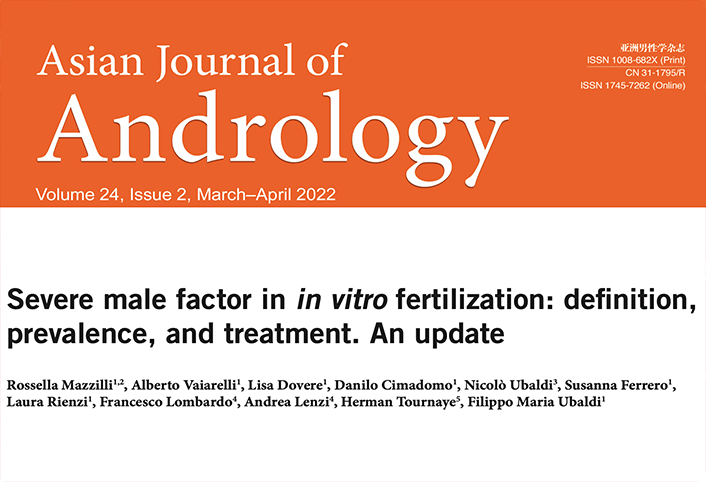
Rossella Mazzilli, Alberto Vaiarelli, Lisa Dovere, Danilo Cimadomo, Nicolò Ubaldi, Susanna Ferrero, Laura Rienzi, Francesco Lombardo, Andrea Lenzi, Herman Tournaye, Filippo Maria Ubaldi
Asian Journal of Andrology 2021 Jul 6.; doi: 10.4103/aja.aja_53_21;
Abstract
Infertility affects 10%–15% of couples worldwide. Of all infertility cases, 20%–70% are due to male factors. In the past, men with severe male factor (SMF) were considered sterile. Nevertheless, the development of intracytoplasmic sperm injection (ICSI) drastically modified this scenario. The advances in assisted reproductive technology (ART), specifically regarding surgical sperm retrieval procedures, allowed the efficacious treatment of these conditions. Yet, before undergoing ICSI, male factor infertility requires careful evaluation of clinical and lifestyle behavior together with medical treatment. Epidemiologically speaking, women whose male partner is azoospermic tend to be younger and with a better ovarian reserve. These couples, in fact, are proposed ART earlier in their life, and for this reason, their ovarian response after stimulation is generally good. Furthermore, in younger couples, azoospermia can be partially compensated by the efficient ovarian response, resulting in an acceptable fertility rate following in vitro fertilization (IVF) techniques. Conversely, when azoospermia is associated with a reduced ovarian reserve and/or advanced maternal age, the treatment becomes more challenging, with a consequent reduction in IVF outcomes. Nonetheless, azoospermia seems to impair neither the euploidy rate at the blastocyst stage nor the implantation of euploid blastocysts. Based on the current knowledge, the assessment of male infertility factors should involve: (1) evaluation – to diagnose and quantify seminologic alterations; (2) potentiality – to determine the real possibilities to improve sperm parameters and/or retrieve spermatozoa; (3) time – to consider the available “treatment window”, based on maternal age and ovarian reserve. This review represents an update of the definition, prevalence, causes, and treatment of SMF in a modern ART clinic.
